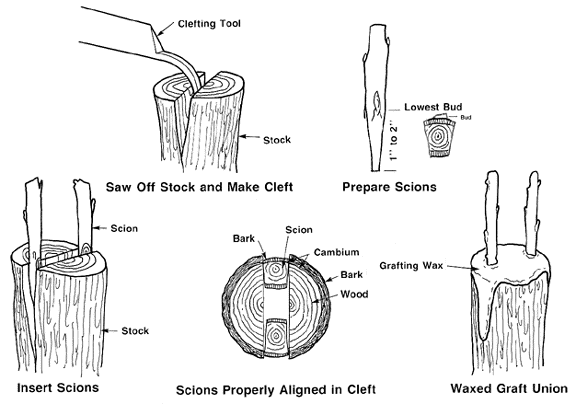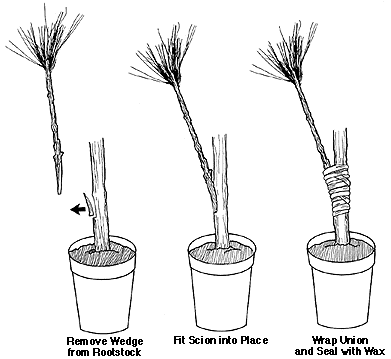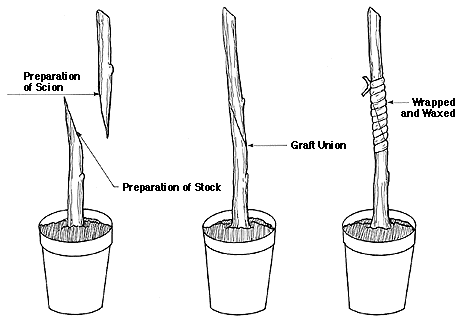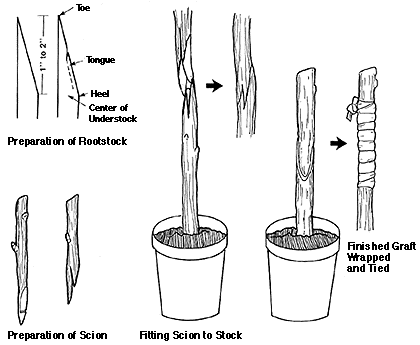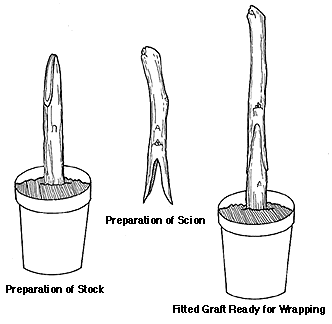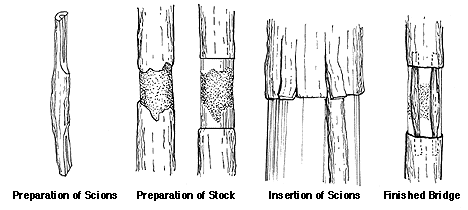CHAPTER 2 : THE TRANSFORMATION OF AGRICULTURE (PLANT GRAFTING)
Friday, 25 September 2015 @ 22:48
1. DEFINITION OF PLANT GRAFTING
Grafting or graftage is a horticultural technique whereby tissues from one plant are inserted into those of another so that the two sets of vascular tissues may join together. This vascular joining is called inosculation. The technique is most commonly used in asexual propagation of commercially grown plants for the horticultural and agricultural trades.
2. HISTORY & TABOO OF PLANT GRAFTING
Indo-European agriculture began in the
Middle East about
12,000 years ago with the
domestication of wild grain. Annual grasses evolved physical characteristics which enhanced their relationship with early farmers. Large, strong seed heads survived harvest by humans more often than small, brittle ones. Human intervention naturally selected the plants with the best agricultural adaptation. Long-lived woody plants like
fruit and nut trees react too slowly for this quick domestication. As early as 1000 B.C., farmers developed a way around that problem---
cloning select individual plants by grafting.
Grafting in its early days drew some official criticism as a potential
mixing of species forbidden by religious law. Prejudice against grafting continued even into early American history. Though famed for spreading the apple tree through early America, Johnny "Appleseed" Chapman spoke of
grafting as an injury to the tree. Interspecies grafting became one of the most important applications, introducing disease resistance to threatened crops. Grafting French wine grapes to American rootstocks at the close of the 19th century saved that entire industry from destruction by blight.
3. MAIN STRUCTURES INVOLVING PLANT GRAFTING
One part will form the top of the plant or the "scion." The scion produces the leaves, flowers and fruit. The other part will produce the root system and is known as the "rootstock" or "understock."
4. TECHNIQUES USED IN PLANT GRAFTING
One of the simplest and most popular forms of grafting, cleft grafting (figure above), is a method for top working both flowering and fruiting trees (apples, cherries, pears, and peaches) in order to change varieties. Cleft grafting is also used to propagate varieties of camellias that are difficult to root. This type of grafting is usually done during the winter and early spring while both scion and rootstock are still dormant. Cleft grafting may be performed on main stems or on lateral or scaffold branches.
The rootstock used for cleft grafting should range from 1 to 4 inches in diameter and should be straight grained. The scion should be about 1⁄4-inch in diameter, straight, and long enough to have at least three buds. Scions that are between 6 and 8 inches long are usually the easiest to use.
Bark grafting (figure above) is used primarily to top work flowering and fruiting trees. In contrast to cleft grafting, this technique can be applied to rootstock of larger diameter (4 to 12 inches) and is done during early spring when the bark slips easily from the wood but before major sap flow. The rootstock is severed with a sharp saw, leaving a clean cut as with cleft grafting.
At one time the side-veneer graft (Figure above) was a popular technique for grafting varieties of camellias and rhododendrons that are difficult to root. Currently, it is the most popular way to graft conifers, especially those having a compact or dwarf form. Side-veneer grafting is usually done on potted rootstock.
Splice grafting (figure above) is used to join a scion onto the stem of a rootstock or onto an intact rootpiece. This simple method is usually applied to herbaceous materials that callus or "knit" easily, or it is used on plants with a stem diameter of 1⁄2-inch or less. In splice grafting, both the stock and scion must be of the same diameter.
The whip and tongue technique (figure above) is most commonly used to graft nursery crops or woody ornamentals. Both the rootstock and scion should be of equal size and preferably no more than 1⁄2-inch in diameter. The technique is similar to splice grafting except that the whip on the rootstock holds the tongue of the scion in place (and vice versa). This leaves both hands free to wrap the joint.
Saddle grafting (figure above) is a relatively easy technique to learn and once mastered can be performed quite rapidly. The stock may be either field-grown or potted. Both rootstock and scion should be the same diameter. For best results, use saddle grafting on dormant stock in mid- to late winter. Stock should not be more than 1 inch in diameter.
Bridge grafting (figure above) is used to "bridge" a diseased or damaged area of a plant, usually at or near the base of the trunk. Such damage commonly results from contact with grading or lawn maintenance equipment, or it may be caused by rodents, cold temperatures, or disease organisms. The bridge graft provides support as well as a pipeline that allows water and nutrients to move across the damaged area. Bridge grafts are usually done in early spring just before active plant growth begins. They may be performed any time the bark on the injured plant "slips."
Inarching, like bridge grafting, is used to bypass or support a damaged or weakened area of a plant stem (figure above). Unlike bridge grafting, the scion can be an existing shoot, sucker, or watersprout that is already growing below and extending above the injury. The scion may also be a shoot of the same species as the injured plant growing on its own root system next to the main trunk of the damaged tree. With the inarching technique, the tip of the scion is grafted in above the injury using the same method as for bark or bridge grafting.
5. ADVANTAGES OF PLANT GRAFTING
- to achieve disease resistance and hardiness;
- to shorten the height and shape of the tree, such as to create a dwarf species;
- to reduce the time for the first production of flowers or fruits;
- to achieve desirable floral or fruit characteristics.




